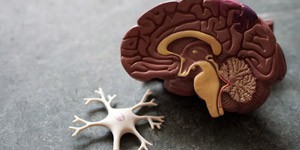By Valeria Giorgi

Assistant physician in internal medicine at the GOM in Lugano (Switzerland), researcher at IRCCS Galeazzi-Sant'Ambrogio Hospital in Milan (Italy), acupuncturist, and kinesiologist, has always been involved in chronic pain; she closely collaborates with AISF ODV (Italian Association of Fibromyalgia Syndrome - Volunteer Organization), the largest association of fibromyalgia patients in Italy.
Introduction: What is fibromyalgia?
Fibromyalgia syndrome (FMS) is a chronic condition causing widespread pain, sleep issues, fatigue, cognitive changes, mood disorders, and a variety of other symptoms (1). It primarily affects females. It can be diagnosed at any age, with prevalence varying worldwide from <1% to 3.6% (2,3). Diagnosis requires persistent symptoms for three months, and the process is complex due to the lack of specific biomarkers and symptom overlap with other diseases (4).
FMS appears to have multiple causes. A crucial role is played by genetic predisposition, as shown by studies on families and genetic variants related to the nociceptive system (a sensory system in the body that detects and responds to stimuli that might cause harm) in FMS patients. However, an intricate interaction exists between genetic and environmental factors, including infectious or metabolic diseases and psychological traumas (5, 6). These influences can cause alterations in the nervous, neuroendocrine, and autonomic systems, leading to a change in the pain perception threshold and resulting in nociplastic pain. This pain occurs when functional changes affect pain pathways without structural damage being recognized (7). This shifts nociceptive pain from being merely a symptom to a standalone condition, a disease (8). Neuroinflammation and low-grade systemic inflammation, often linked with intestinal issues like leaky gut syndrome and microbiome changes, could play a significant role. Fibromyalgia can occur in both, individuals who were previously healthy (primary FMS) and those with a history of chronic painful conditions (secondary FMS).
Relying solely on medications for FMS is insufficient. Complementary therapeutic avenues like acupuncture, spa therapy, and mind-body techniques can supplement conventional treatments. Psychological support, crucial in chronic painful conditions like FMS, also plays a significant role. Therefore, an integrated, multidisciplinary, and personalized approach is needed for treatment (9). This approach should consider the variability of fibromyalgia symptoms and be viewed as an evolving process. Essential elements include education, physical activity, nutrition, and appropriate medication. Complementary therapies and psychological support, due to the symptom variability among FMS patients, should also be included in the continuous treatment process.
The Use of Cannabis in Fibromyalgia Syndrome
Diagnosing fibromyalgia, a condition with fluctuating and varied symptoms, is challenging, complicating treatment strategies. Despite numerous therapies, only about 30% of cases reach satisfactory outcomes. Recently, medical cannabis (MC) has gained interest for managing chronic pain and fibromyalgia due to its anti-inflammatory and immune-modulating properties by activating cannabinoid (CB) receptors on immune cells and in the central nervous system (9). Cannabis, especially cannabidiol (CBD), affects intestinal permeability and inflammation, while tetrahydrocannabinol (THC) may provide significant pain relief. CB1 receptors, upregulated in chronic neuropathic pain, may also impact stress-induced visceral hypersensitivity (9).
Despite the promising pharmacological properties of cannabis sativa for treating fibromyalgia, the exact role of the endocannabinoid system in fibromyalgia pathogenesis remains uncertain. Preclinical studies, including a recent investigation (10) demonstrating pain sensitivity improvements in mice treated with low-THC cannabis oil orally or spinally, offer encouraging insights. Genetic studies (11) examining the whole-genome expression profiles of fibromyalgia patients have not identified significant alterations within the endocannabinoid system. Although one study identified a variant of the gene encoding the CB1 receptor in a subset of fibromyalgia patients (12), this finding lacks consistent replication. The hypothesis that fibromyalgia may involve an endocannabinoid deficiency (13) remains speculative; recent investigations have suggested elevated plasma levels of endocannabinoids, particularly anandamide and 2-AG, and related compounds (9), possibly as a compensatory response to the chronic inflammatory state associated with fibromyalgia.
Clinical studies on cannabis in fibromyalgia: exploring the evidence
At present, both the effects of cannabis as a whole plant and those of isolated cannabinoids (THC and CBD, alone or in combination) in FMS are being studied.
A 2016 review included two trials on cannabinoids for FMS. One trial showed significant improvements with nabilone treatment, synthetic THC, vs. placebo (starting from 0.5 mg and subsequently increased to 1 mg + 0.5 mg per day), but another found no significant differences with amitriptyline, which is an antidepressant commonly used for FMS treatment. The review concluded that the evidence for nabilone was insufficient due to low study quality (14). A separate study on dronabinol, another synthetic THC (7.5 mg per day), showed decreased pain and depression, improving quality of life. However, 25% of participants dropped out (15).
A randomized trial involving 17 women explored THC-rich cannabis oil's effects on fibromyalgia. over an eight-week period. The cannabis group experienced significant improvements in their Fibromyalgia Impact Questionnaire score and specific areas like "feel good," "pain," "ability to work," and "fatigue". The placebo group exhibited a significant improvement in the "depression" score after the intervention. No severe adverse effects were reported. The study suggests phytocannabinoids may effectively reduce symptoms and improve the quality of life in fibromyalgia patients (16).
The majority of studies on medical cannabis in patients with fibromyalgia syndrome (FMS) are spontaneous and observational. One of the pioneering observational studies (17) conducted over a 6-month period on 367 FMS patients using various MC preparations showed a reduction in average pain intensity from 9 to 5 on a scale from 0 to 10. Common side effects included dizziness (7.9%), dry mouth (6.7%), and gastrointestinal symptoms (5.4%). This study examined treatment outcomes associated with positive results, such as the presence of spasticity or previous cannabis use, and negative outcomes, including age >60 years and concerns about MC use as a medication. A study (18) treated 102 fibromyalgia patients with two MC extracts with Bedrocan (22% THC, <1% CBD) and Bediol (6.3% THC, 8% CBD) diluted in olive oil, administered in variable proportions based on patient needs. It resulted in improved sleep quality and life quality in 44% and 33% of patients, respectively, after 6 months. Concurrent analgesic treatment was reduced in 47% of patients. However, a third experienced mild adverse effects. Another study (19) found MC beneficial in patients with fibromyalgia and low back pain, finding positive results compared with opioids. In a recent study, spanning a 12-month follow-up period and involving more than 300 patients (20), suggested that MC's pain-reducing effects could be due to improvements in sleep and psychological factors, but a high dropout rate raised uncertainty.
According to a systematic review and meta-analysis (24), the treatment of chronic primary pain (CPP) with cannabinoids (considering full-spectrum MC extracts and individual cannabinoids as equivalents) showed limited benefits in pain reduction. However, there was evidence suggesting potential benefits in specific conditions like fibromyalgia and complex regional pain syndrome type I, particularly with extended use. Another study by Scott et al. (25) shed light on the possible limitations of MC, indicating that it may not be a definitive solution for severe forms of chronic nociplastic pain, despite its potential relief. Individuals who suffer from severe chronic nociplastic pain, including FMS, often turn to MC due to the insufficiency of conventional pain medications, and tend to substitute more other pain medications in favour of MC. However, they also report fewer symptom improvements. Finally, a comprehensive review (26) compared cannabis and opioids in managing chronic non-cancer pain. The analysis found that both provided comparable pain relief, but cannabis led to fewer discontinuations due to adverse events. This suggests that cannabis might be a potential alternative to opioids in managing chronic non-cancer pain, with potentially fewer adverse effects.
More trials on MC for fibromyalgia are underway. The Fibrocann study (21) aims to determine the dose-response curve for pain intensity reduction in fibromyalgia patients to different concentrations of CBD/THC, but results are not yet available (as of March 2024). A phase 2 study with a standardized cannabis extract (KL16-012) was conducted in Sept 2020, but did not report results (22). The ongoing CANNFIB Trial in Sweden is studying CBD's effectiveness (23).
It's important to highlight that treating chronic pain, including FMS, requires a multidisciplinary approach. This involves physical activity, rehabilitation, nutritional interventions, and psychological support. This comprehensive approach addresses the various aspects of chronic pain and promotes overall well-being. Therefore, MC cannot be the sole and final approach. While cannabinoids may not relieve all instances of chronic pain, emerging evidence suggests potential effectiveness in specific conditions like fibromyalgia. Nevertheless, the complex nature of managing chronic pain emphasizes the need for personalized, multidisciplinary strategies to effectively meet the diverse needs of patients with chronic pain disorders.
Conclusions and Perspectives
Recent studies suggest MC, particularly THC-rich compounds, may benefit FMS patients by addressing pain and sleep disturbances. While scientific evidence for CBD is limited, surveys indicate some FMS patients find relief from CBD treatments (27, 28). However, research is ongoing.
Many studies suffer from small sample sizes, limiting their accuracy, highlighting the need for larger studies. Observational studies, such as the UK Medical Cannabis Registry, offer more externally valid results by involving larger patient cohorts. This registry showed significant improvements in patient-reported outcomes, including anxiety, sleep quality, and overall health quality of life, with low adverse events, at 1 to 6 months of treatment (29). Such registries are crucial for understanding the real-world effectiveness and safety of cannabinoid-based therapies.
These findings demonstrate that cannabinoid-based medical products are associated with a low incidence of severe adverse events in the medium-term, while also yielding positive changes in HRQoL outcomes, particularly anxiety and sleep-specific measures. Although randomized controlled trials are still awaited to establish causation definitively, real-world evidence serves to inform current clinical practice and guide future trials, constituting a vital component of pharmacovigilance efforts.
An essential aspect to consider in the use of cannabis therapy for FMS is the identification of predictors of clinical response. Both published studies and personal clinical practice emphasize biases against cannabis and patient age (i.e., years since diagnosis) as primary predictors of treatment ineffectiveness. However, a recent study (30) has suggested that cannabis therapy may be more beneficial for patients resistant to conventional treatments. Notably, in clinical practice, cannabis therapy has shown efficacy, particularly in patients with significant comorbidities associated with severe chronic pain, such as chronic migraine.
To conclude, it is crucial to tailor cannabis therapy for FMS on a case-by-case basis, underscoring the importance of individualized treatment approaches as the cornerstone of an effective strategy for managing chronic pain.
REFERENCES
1) Sarzi-puttini P, Giorgi V, Marotto D, et al. Fibromyalgia: an update on clinical characteristics, aetiopathogenesis and treatment. Nat Rev Rheumatol 2020;16:645–660
2) Queiroz LP. Worldwide epidemiology of fibromyalgia. Curr Pain Headache Rep 2013;17:356
3) Jones GT, Atzeni F, Beasley M, et al. The prevalence of fibromyalgia in the general population: a comparison of the American College of Rheumatology 1990, 2010, and modified 2010 classification criteria. Arthritis Rheumatol (Hoboken, NJ) 2015;67:568–75
4) Wolfe F, Clauw DJ, Fitzcharles MA, et al. Fibromyalgia criteria and severity scales for clinical and epidemiological studies: A modification of the ACR preliminary diagnostic criteria for fibromyalgia. J Rheumatol 2011;38:1113–22.
5) Arnold LM, Bennett RM, Crofford LJ, et al. AAPT Diagnostic Criteria for Fibromyalgia. J Pain 2019;20:611–28
6) Casale R, Sarzi-Puttini P, Botto R, et al. Fibromyalgia and the concept of resilience. Clin Exp Rheumatol 2019;37:105–13.
7) Trouvin AP, Perrot S. New concepts of pain. Best Pract Res Clin Rheumatol 2019;33:101415.
8) Treede RD, Rief W, Barke A, et al. Chronic pain as a symptom or a disease: The IASP Classification of Chronic Pain for the International Classification of Diseases (ICD-11). Pain 2019;160:19–27.
9) Bourke SL, Schlag AK, O'Sullivan SE, Nutt DJ, Finn DP. Cannabinoids and the endocannabinoid system in fibromyalgia: A review of preclinical and clinical research. Pharmacol Ther [Internet]. 2022;240:108216.
10) Ferrarini EG, et al. Broad-spectrum cannabis oil ameliorates reserpine-induced fibromyalgia model in mice. Biomed Pharmacother. 2022 Oct;154:113552.
11) Jones, et al. Genome-wide expression profiling in the peripheral blood of patients with fibromyalgia HHS Public Access Author manuscript. Clinical and Experimental Rheumatology, 34 (2016), pp. 89-98
12) Smith, et al. Large candidate gene association study reveals genetic risk factors and therapeutic targets for fibromyalgia. Arthritis and Rheumatism, Vol. 64 (2012), pp. 584-593
13) Russo EB. Clinical Endocannabinoid Deficiency Reconsidered: Current Research Supports the Theory in Migraine, Fibromyalgia, Irritable Bowel, and Other Treatment-Resistant Syndromes. Cannabis Cannabinoid Res 2016;1:154–65.
14) Walitt B, et al. Cannabinoids for fibromyalgia. Cochrane Database of Systematic Reviews 2016;7.
15) Weber J, Schley M, Casutt M, et al. Tetrahydrocannabinol (Delta 9-THC) Treatment in Chronic Central Neuropathic Pain and Fibromyalgia Patients: Results of a Multicenter Survey. Anesthesiol Res Pract 2009;2009:827290.
16) Chaves C et al. Ingestion of a THC-Rich Cannabis Oil in People with Fibromyalgia: A Randomized, Double-Blind, Placebo-Controlled Clinical Trial. Pain Medicine 2020;21(10):2212–2218
17) Sagy I, et al. Safety and Efficacy of Medical Cannabis in Fibromyalgia. J Clin Med. 2019;8(6):807.
18) Giorgi V, et al. Adding medical cannabis to standard analgesic treatment for fibromyalgia: a prospective observational study. Clin Exp Rheumatol. 2020 Jan-Feb;38 Suppl 123(1):53-59.
19) Yassin M, Oron A, Robinson D. Effect of adding medical cannabis to analgesic treatment in patients with low back pain related to fibromyalgia: an observational cross-over single centre study. Clin Exp Rheumatol [Internet]. 2019
20) Sotoodeh R, et al. Predictors of pain reduction among fibromyalgia patients using medical cannabis: a long-term prospective cohort study. Arthritis Care Res (Hoboken). 2022 Jul 25. doi: 10.1002/acr.24985. Epub ahead of print. PMID: 35876631
21) Study Details | CBD (Cannabidiol)/THC (Tetrahydrocannabinol) Solution as a Pharmacological Strategy for Patients With Fibromyalgia (FibroCann) | ClinicalTrials.gov
22) Study Details | Phase II Clinical Trial, Use of KL16-012 in Women With Fibromyalgia Refractary to Conventional Treatment. | ClinicalTrials.gov
23) Study Details | Cannabidiol for Fibromyalgia (The CANNFIB Trial) | ClinicalTrials.gov
24) Giossi R, Carrara F, Padroni M, Bilancio MC, Mazzari M, Enisci S, Romio MS, Boni G, Corrù F, Fittipaldo VA, Tramacere I, Pani A, Scaglione F, Fornasari D. Systematic Review and Meta-analysis Seem to Indicate that Cannabinoids for Chronic Primary Pain Treatment Have Limited Benefit. Pain Ther. 2022 Dec;11(4):1341-1358.
25) Scott JR, Williams DA, Harte SE, Harris RE, Litinas E, Sisley S, Clauw DJ, Boehnke KF. Relationship Between Nociplastic Pain Involvement and Medication Use, Symptom Relief, and Adverse Effects Among People Using Medical Cannabis for Chronic Pain. Clin J Pain. 2024 Jan 1;40(1):1-9.
26) Jeddi HM, Busse JW, Sadeghirad B, Levine M, Zoratti MJ, Wang L, Noori A, Couban RJ, Tarride JE. Cannabis for medical use versus opioids for chronic non-cancer pain: a systematic review and network meta-analysis of randomised clinical trials. BMJ Open. 2024 Jan 3;14(1):e068182.
27) Boehnke, Kevin F., et al. Cannabidiol use for fibromyalgia: prevalence of use and perceptions of effectiveness in a large online survey. The Journal of Pain 2021;22(5):556-566.
28) Boehnke, Kevin F., et al. Cannabidiol use for fibromyalgia: prevalence of use and perceptions of effectiveness in a large online survey. The Journal of Pain 2021;22(5):556-566.
29) Ergisi M, Erridge S, Harris M, Kawka M, Nimalan D, Salazar O, Loupasaki K, Ali R, Holvey C, Coomber R, Usmani A, Sajad M, Beri S, Hoare J, Khan SA, Weatherall MW, Platt M, Rucker JJ, Sodergren MH. An Updated Analysis of Clinical Outcome Measures Across Patients From the UK Medical Cannabis Registry. Cannabis Cannabinoid Res. 2023 Jun;8(3):557-566.
30) Hershkovich O, Hayun Y, Oscar N, Shtein A, Lotan R. The role of cannabis in treatment-resistant fibromyalgia women. Pain Pract. 2023 Feb;23(2):180-184


